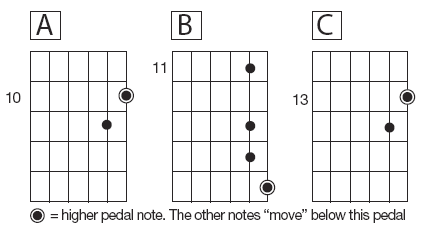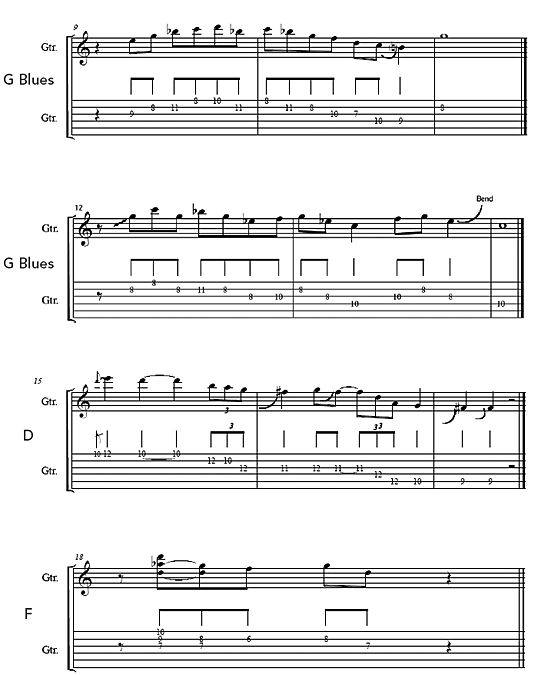Welcome back to the world of George Benson! Anyone who has seen the fairly new George Benson DVD, The Art of Jazz Guitar, is reminded of Benson’s virtuosic jazz

Welcome back to the world of George Benson! Anyone who has seen the fairly new George Benson DVD, The Art of Jazz Guitar, is reminded of Benson’s virtuosic jazz playing and the many unique techniques and ideas he has given us over the years; the moving octaves with a fourth in the middle; scat singing; new directions in speedy Wes-style improvised chord lines; double stop licks; a unique chromatic concept; the importance of the original melody; and the idea that you can express jazz in an earthy, joyful, uninhibited spirit. George has left an indelible mark on the evolution of jazz guitar.
Benson says of his influences, “My concepts and ideas have been built up from many incredible players… Django Reinhardt… Charlie Christian… Tal Farlow... Joe Pass and Wes Montgomery, one of our greatest icons. [My style] is a collection of ideas, thoughts and techniques that I’ve taken from many teachers around the world – not people that I’ve studied the guitar with necessarily, but people that I’ve taken things from, examining their techniques and ways of doing things… [such players] have really given me insight into what the possibilities of the guitar are.”
YouTube.com is filled with Benson performances, and thanks to technology, we can now enjoy comparing recent live performances of “Breezin’” with the original version from the seventies. Benson, now the elder statesman of jazz guitar, shows a mature confidence and plays with a voice that is completely integrated, at ease and still on fire, as only he can be. This uniquely recognizable guitar voice was formulated early in Benson’s life and has been around since the early sixties, when George was barely 20 years old. That harmonic language and stylistic approach are still very much present, although the years have added refinement, polish and an “effortless mastery.” He is a player for whom we shake our heads and say, “He just always sounded that way!” Listen to the 1965 version of “Willow Weep for Me” – many of those signature Benson licks, along with the blistering technique, have been in place since the early days.
Although often chastised by some for focusing on a commercial career, when he did make bebop recordings – painfully few for many jazz aficionados – it was some of the finest, most heated, traditional jazz guitar playing you could ask for. One only has to listen to the solo on “Billie’s Bounce” (George Benson, Compact Jazz) or the “Mimosa” solo (Jimmy Smith, Off The Top) to become a believer. Like few other players, one can listen to any of his commercial recordings and be surprised by how strong the solos are, irrespective of genre. Even what we might call his “smooth jazz” recordings reveal a talent that transcends style. For example, his work with Earl Klugh on Collaboration is filled with Benson’s burning, blues-based jazz lines and is worthy of further study.
George Benson got his start at age 19, performing with B-3 organist Jack McDuff. It is therefore no wonder that many of his stock blues licks are “organ-esque” in their approach. The three examples of doublestop licks above are favorites of George and are essentially organ-style licks where a pedal note is placed above other activity. These examples are all written in the key of G. In example A, the Bb on the B string is bent upwards while holding the D above it. This emphasizes the flat third blues note, as over a G7 chord. In example B, we are holding a G on the E string, while moving a blues phrase below it (Bb, C, Db – in any linear order you like). Example C finds us holding an F and bending a Db below it – this emphasizes the 7 and b5 blue notes against a G7 chord.
Also included for your study are a few more typical Benson phrases, showing that his jazz style is based within a blues vocabulary. In his personal statement above, George has reminded us that it is important to study the masters and draw ideas from them. We should study his music with the aim of developing a voice that is our own – after all, there can only be one George Benson.

Jim Bastian
A clinician and jazz educator, Jim Bastian is a 10 year veteran of teaching guitar in higher education. Jim holds two masters degrees and has published 6 jazz studies texts, including the best-selling How to Play Chordal Bebop Lines, for Guitar (available from Jamey Aebersold). He actively performs on both guitar and bass on the East Coast.
An avid collector and trader in the vintage market, you can visit Jim’s store at premierguitar.com (dealer: IslandFunhouse).
